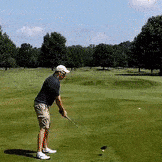IGNORED
65/20/15 Practice Ratios: Where to Devote Your Practice Time
-
Topics Being Discussed Right Now on The Sand Trap
-
- 1,492 replies
- 194,747 views
-
- 8,502 replies
- 387,947 views
-
"5 Minutes Daily" Practice Challenge 1 2 3 4 911
By iacas, in Instruction and Playing Tips
- 5 minutes daily
- dedication
- (and 6 more)
- 16,387 replies
- 1,137,269 views
-
- 5,379 replies
- 622,608 views
-
- 2 replies
- 163 views
-








Recommended Posts
Create an account or sign in to comment
You need to be a member in order to leave a comment
Create an account
Sign up for a new account in our community. It's easy!
Register a new accountSign in
Already have an account? Sign in here.
Sign In Now